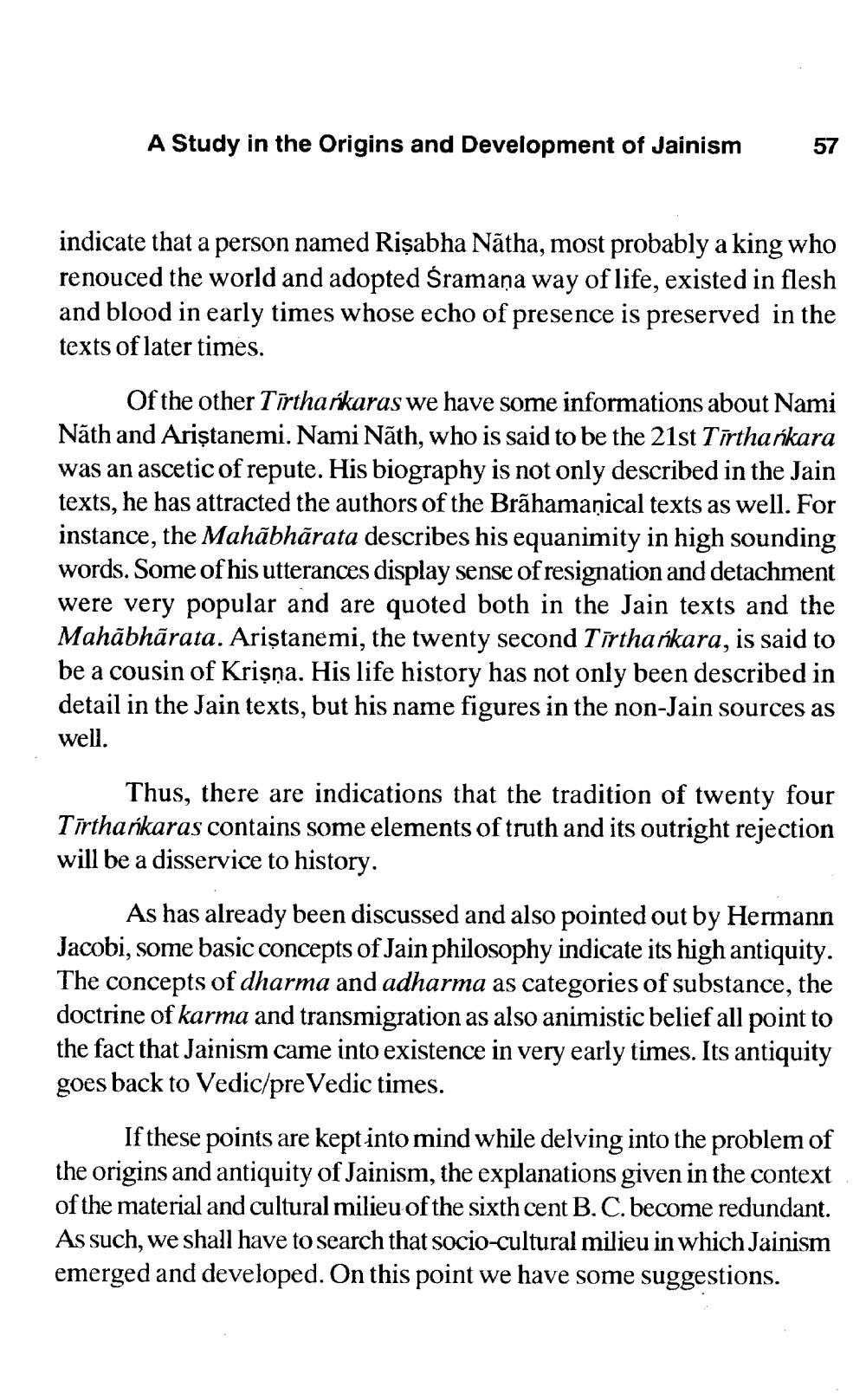________________
A Study in the Origins and Development of Jainism
57
indicate that a person named Rişabha Nátha, most probably a king who renouced the world and adopted śramaņa way of life, existed in flesh and blood in early times whose echo of presence is preserved in the texts of later times.
Of the other Tīrtharkaras we have some informations about Nami Nãth and Ariştanemi. Nami Nãth, who is said to be the 21st Tīrthańkara was an ascetic of repute. His biography is not only described in the Jain texts, he has attracted the authors of the Brahamaņical texts as well. For instance, the Mahābhārata describes his equanimity in high sounding words. Some of his utterances display sense of resignation and detachment were very popular and are quoted both in the Jain texts and the Mahābhārata. Aristanemi, the twenty second Tirtharkara, is said to be a cousin of Krişna. His life history has not only been described in detail in the Jain texts, but his name figures in the non-Jain sources as well.
Thus, there are indications that the tradition of twenty four Tirtharkaras contains some elements of truth and its outright rejection will be a disservice to history.
As has already been discussed and also pointed out by Hermann Jacobi, some basic concepts of Jain philosophy indicate its high antiquity. The concepts of dharma and adharma as categories of substance, the doctrine of karma and transmigration as also animistic belief all point to the fact that Jainism came into existence in very early times. Its antiquity goes back to Vedic/preVedic times.
If these points are kept into mind while delving into the problem of the origins and antiquity of Jainism, the explanations given in the context of the material and cultural milieu of the sixth cent B.C. become redundant. As such, we shall have to search that socio-cultural milieu in which Jainism emerged and developed. On this point we have some suggestions.




